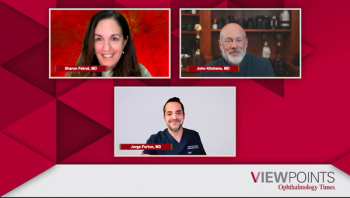
PDS with ranibizumab in nAMD shows similar results to monthly injections
Arshad Khanani, MD, MA, reports primary study findings from the phase 3 study on the Port Delivery System with ranibizumab.
Arshad Khanani, MD, MA, from the Sierra Eye Institute, Reno, NV, reported that the Port Delivery System with ranibizumab (PDS) (Lucentis, Genentech) (F. Hoffmann-La Roche Ltd.), an investigational product that continuously delivers ranibizumab intravitreally, achieved results similar to those in patients treated with monthly ranibizumab injections for neovascular age-related macular degeneration (nAMD).
Khanani reported the primary study findings from the phase 3 study.
Phase 3 Archway trial results
The PDS, which contains 100 mg/ml of ranibizumab, was non-inferior and equivalent to monthly 0.5-mg ranibizumab injections for changes in the best-corrected visual acuity compared with baseline at the average of weeks 36 and 40 and remained non-inferior through 2 refill-exchange intervals at the average of weeks 44 and 48.
The visual and anatomic results with the PDS were comparable to those with monthly ranibizumab through week 72 regardless of the presence or absence of subretinal or intraretinal fluid.
The presence of intraretinal fluid in the central 1 mm of the retina was associated with worse vision outcomes, which was consistent with the findings of other trials.
Continuous delivery of ranibizumab via the PDS every 24 weeks maintained the vision outcomes, regardless of the overall presence or absence of retinal fluid.
The vast majority of patients, i.e., over 90%, randomized to the PDS did not receive supplemental treatment before each refill-exchange procedure at 24-week intervals.
In addition, 93% of patients in this study population preferred PDS over monthly intravitreal injections of ranibizumab at week 40.
The adverse events associated with the PDS procedure were manageable and are continually being analyzed to optimize the patient outcomes with nAMD.
---
Arshad Khanani, MD, MA
e: [email protected]
Newsletter
Don’t miss out—get Ophthalmology Times updates on the latest clinical advancements and expert interviews, straight to your inbox.














































.png)


